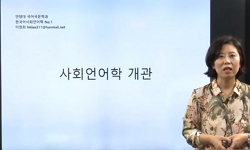Objectives: The association between educational status and 10-year risk for acute coronary syndrome (ACS) and all-cause mortality was evaluated. Methods: From October 2003 to September 2004, 2172 consecutive ACS patients from six Greek hospitals were ...
http://chineseinput.net/에서 pinyin(병음)방식으로 중국어를 변환할 수 있습니다.
변환된 중국어를 복사하여 사용하시면 됩니다.
- 中文 을 입력하시려면 zhongwen을 입력하시고 space를누르시면됩니다.
- 北京 을 입력하시려면 beijing을 입력하시고 space를 누르시면 됩니다.


The Impact of Educational Status on 10-Year (2004-2014) Cardiovascular Disease Prognosis and All-cause Mortality Among Acute Coronary Syndrome Patients in the Greek Acute Coronary Syndrome (GREECS) Longitudinal Study
한글로보기https://www.riss.kr/link?id=A103572626
-
저자
Venetia Notara (Harokopio University) ; Demosthenes B. Panagiotakos (Harokopio University) ; Yannis Kogias (Cardiology Clinic, General Hospital of Karditsa, Karditsa) ; Petros Stravopodis (Cardiology Clinic, General Hospital of Zakynthos Island, Zakynthos) ; Antonis Antonoulas (Cardiology Clinic, General Hospital of Lamia, Lamia) ; Spyros Zombolos (Cardiology Clinic, General Hospital of Kalamata, Kalamata) ; Yannis Mantas (Cardiology Clinic, General Hospital of Chalkida, Chalkida) ; Christos Pitsavos (University of Athens) ; GREECS Study Investigators (GREECS Study Investigators)

- 발행기관
- 학술지명
- 권호사항
-
발행연도
2016
-
작성언어
English
- 주제어
-
등재정보
KCI등재,SCOPUS
-
자료형태
학술저널
- 발행기관 URL
-
수록면
220-229(10쪽)
-
KCI 피인용횟수
0
- 제공처
-
0
상세조회 -
0
다운로드
부가정보
다국어 초록 (Multilingual Abstract)
Objectives: The association between educational status and 10-year risk for acute coronary syndrome (ACS) and all-cause mortality was evaluated.
Methods: From October 2003 to September 2004, 2172 consecutive ACS patients from six Greek hospitals were enrolled. In 2013 to 2014, a 10-year follow-up (2004-2014) assessment was performed for 1918 participants (participation rate, 88%). Each patient’s educational status was classified as low (<9 years of school), intermediate (9 to 14 years), or high (>14 years).
Results: Overall all-cause mortality was almost twofold higher in the low-education group than in the intermediate-education and high-education groups (40% vs. 22% and 19%, respectively, p<0.001). Additionally, 10-year recurrent ACS events (fatal and non-fatal) were more common in the low-education group than in the intermediate-education and high-education groups (42% vs. 30% and 35%, p<0.001), and no interactions between sex and education on the investigated outcomes were observed. Moreover, patients in the high-education group were more physically active, had a better financial status, and were less likely to have hypertension, diabetes, or ACS than the participants with the least education (p<0.001); however, when those characteristics and lifestyle habits were accounted for, no moderating effects regarding the relationship of educational status with all-cause mortality and ACS events were observed.
Conclusions: A U-shaped association may be proposed for the relationship between ACS prognosis and educational status, with participants in the low-education and high-education groups being negatively affected by other factors (e.g., job stress, depression, or loneliness). Public health policies should be aimed at specific social groups to reduce the overall burden of cardiovascular disease morbidity.
참고문헌 (Reference)
1 Sethi R, "“Poor man’s risk factor”: correlation between high sensitivity C-reactive protein and socio-economic class in patients of acute coronary syndrome" 60 (60): 205-209, 2008
2 Cutler DM, "Understanding differences in health behaviors by education" 29 (29): 1-28, 2010
3 Estoppey D, "Trends in self-reported prevalence and management of hypertension, hypercholesterolemia and diabetes in Swiss adults, 1997-2007" 11 : 114-, 2011
4 National Bureau of Economic Research, "The effects of education on health"
5 World Health Organization, "The determinants of health"
6 Pilote L, "Socioeconomic status, access to health care, and outcomes after acute myocardial infarction in Canada’s universal health care system" 45 (45): 638-646, 2007
7 Kaplan GA, "Socioeconomic factors and cardiovascular disease: a review of the literature" 88 (88): 1973-1998, 1993
8 Marmot MG, "Social/economic status and disease" 8 : 111-135, 1987
9 Pate RR, "Physical activity and public health. A recommendation from the Centers for Disease Control and Prevention and the American College of Sports Medicine" 273 (273): 402-407, 1995
10 Antman E, "Myocardial infarction redefined--a consensus document of the Joint European Society of Cardiology/American College of Cardiology Committee for the redefinition of myocardial infarction" 21 (21): 1502-1513, 2000
1 Sethi R, "“Poor man’s risk factor”: correlation between high sensitivity C-reactive protein and socio-economic class in patients of acute coronary syndrome" 60 (60): 205-209, 2008
2 Cutler DM, "Understanding differences in health behaviors by education" 29 (29): 1-28, 2010
3 Estoppey D, "Trends in self-reported prevalence and management of hypertension, hypercholesterolemia and diabetes in Swiss adults, 1997-2007" 11 : 114-, 2011
4 National Bureau of Economic Research, "The effects of education on health"
5 World Health Organization, "The determinants of health"
6 Pilote L, "Socioeconomic status, access to health care, and outcomes after acute myocardial infarction in Canada’s universal health care system" 45 (45): 638-646, 2007
7 Kaplan GA, "Socioeconomic factors and cardiovascular disease: a review of the literature" 88 (88): 1973-1998, 1993
8 Marmot MG, "Social/economic status and disease" 8 : 111-135, 1987
9 Pate RR, "Physical activity and public health. A recommendation from the Centers for Disease Control and Prevention and the American College of Sports Medicine" 273 (273): 402-407, 1995
10 Antman E, "Myocardial infarction redefined--a consensus document of the Joint European Society of Cardiology/American College of Cardiology Committee for the redefinition of myocardial infarction" 21 (21): 1502-1513, 2000
11 Capewell S, "Modelling the UK burden of cardiovascular disease to 2020" Cardio & Vascular Coalition and the British Heart Foundation 35-38, 2008
12 Notara V, "Lower financial status and adherence to medication determines 10-year (2004-2014) all-cause mortality and risk for acute coronary syndrome incidence among cardiac patients: the GREECS study" 13 (13): 771-777, 2015
13 Kirchberger I, "Long-term survival among older patients with myocardial infarction differs by educational level: results from the MONICA/KORA myocardial infarction registry" 13 : 19-, 2014
14 Kalediene R, "Inequalities in mortality by education and socio-economic transition in Lithuania: equal opportunities" 119 (119): 808-815, 2005
15 Beauchamp A, "Inequalities in cardiovascular disease mortality: the role of behavioural, physiological and social risk factors" 64 (64): 542-548, 2010
16 Huber D, "Implementation of a telephone-based secondary preventive intervention after acute coronary syndrome (ACS): participation rate, reasons for non-participation and 1-year survival" 17 : 85-, 2016
17 Stelmach W, "How income and education contribute to risk factors for cardiovascular disease in the elderly in a former Communist country" 118 (118): 439-449, 2004
18 Braunwald E, "Heart disease: a textbook of cardiovascular medicine" Saunders 1187-1188, 1997
19 Franco Sassi, "Exploring the Relationship Between Education and Obesity" Organisation for Economic Co-Operation and Development (OECD) 2011 (2011): 1-40, 2011
20 Taylor RS, "Exercise-based rehabilitation for patients with coronary heart disease: systematic review and meta-analysis of randomized controlled trials" 116 (116): 682-692, 2004
21 Pitsavos C, "Epidemiology of acute coronary syndromes in a Mediterranean country; aims, design and baseline characteristics of the Greek study of acute coronary syndromes (GREECS)" 5 : 23-, 2005
22 Mayer O, "Educational level and risk profile of cardiac patients in the EUROASPIRE II substudy" 58 (58): 47-52, 2004
23 Reques L, "Educational differences in mortality and the relative importance of different causes of death: a 7-year follow-up study of Spanish adults" 68 (68): 1151-1160, 2014
24 Montez JK, "Educational attainment and adult mortality in the United States: a systematic analysis of functional form" 49 (49): 315-336, 2012
25 Organization for Economic Cooperation and Development, "Education at a glance 2013: OECD indicators"
26 Pitsavos CE, "Education and acute coronary syndromes: results from the CARDIO2000 epidemiological study" 80 (80): 371-377, 2002
27 Singh GK, "Dramatic increases in obesity and overweight prevalence and body mass index among ethnic-immigrant and social class groups in the United States, 1976-2008" 36 (36): 94-110, 2011
28 Sattelmair J, "Dose response between physical activity and risk of coronary heart disease: a meta-analysis" 124 (124): 789-795, 2011
29 Kelly-Irving M, "Do general practitioners overestimate the health of their patients with lower education" 73 (73): 1416-1421, 2011
30 Morris JN, "Coronary heart-disease and physical activity of work" 265 (265): 1111-1120, 1953
31 World Health Organization, "Closing the gap in a generation: health equity through action on the social determinants of health"
32 Tang L, "Cardiovascular risk factor control and adherence to recommended lifestyle and medical therapies in persons with coronary heart disease (from the National Health and Nutrition Examination Survey 2007-2010)" 112 (112): 1126-1132, 2013
33 Kotseva K, "Cardiovascular prevention guidelines in daily practice: a comparison of EUROASPIRE I, II, and III surveys in eight European countries" 373 (373): 929-940, 2009
34 Janković S, "Association of socioeconomic status measured by education, and cardiovascular health: a population-based cross-sectional study" 4 (4): e005222-, 2014
35 Panagiotakos DB, "Adherence to the Mediterranean food pattern predicts the prevalence of hypertension, hypercholesterolemia, diabetes and obesity, among healthy adults; the accuracy of the MedDietScore" 44 (44): 335-340, 2007
36 Tsai SY, "A study of the health-related quality of life and work-related stress of white-collar migrant workers" 9 (9): 3740-3754, 2012
동일학술지(권/호) 다른 논문
-
A Systematic Review of the Economic Evaluation of Telemedicine in Japan
- The Korean Society for Preventive Medicine
- Akiyama, Miki
- 2016
- KCI등재,SCOPUS
-
Helicobacter pylori Infection and Risk of Gastric Cancer in Korea: A Quantitative Systematic Review
- The Korean Society for Preventive Medicine
- Bae, Jong-Myon
- 2016
- KCI등재,SCOPUS
-
- The Korean Society for Preventive Medicine
- Lim, Hyungryul
- 2016
- KCI등재,SCOPUS
-
- The Korean Society for Preventive Medicine
- Notara, Venetia
- 2016
- KCI등재,SCOPUS
분석정보
인용정보 인용지수 설명보기
학술지 이력
| 연월일 | 이력구분 | 이력상세 | 등재구분 |
|---|---|---|---|
| 2023 | 평가예정 | 해외DB학술지평가 신청대상 (해외등재 학술지 평가) | |
| 2020-01-01 | 평가 | 등재학술지 유지 (해외등재 학술지 평가) |  |
| 2010-06-28 | 학술지명변경 | 외국어명 : The Korean Journal of Preventive Medicine -> Journal of Preventive Medicine and Public Health |  |
| 2010-01-01 | 평가 | 등재학술지 유지 (등재유지) |  |
| 2008-01-01 | 평가 | 등재학술지 유지 (등재유지) |  |
| 2006-01-01 | 평가 | 등재학술지 유지 (등재유지) |  |
| 2004-01-01 | 평가 | 등재학술지 유지 (등재유지) |  |
| 2001-01-01 | 평가 | 등재학술지 선정 (등재후보2차) |  |
| 1998-07-01 | 평가 | 등재후보학술지 선정 (신규평가) |  |
학술지 인용정보
| 기준연도 | WOS-KCI 통합IF(2년) | KCIF(2년) | KCIF(3년) |
|---|---|---|---|
| 2016 | 0.3 | 0.3 | 0.39 |
| KCIF(4년) | KCIF(5년) | 중심성지수(3년) | 즉시성지수 |
| 0.31 | 0.32 | 0.784 | 0.13 |




 KCI
KCI



